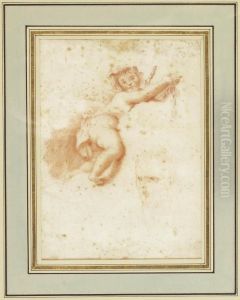Giuseppe Appiani Paintings
Giuseppe Appiani was an Italian painter and engraver born in 1706 in Ancona, a city in the Marche region of Italy. He is often associated with the late Baroque and early Neoclassical periods. Giuseppe was part of the Appiani family, which included several artists, though he is not to be confused with the more famous Andrea Appiani, who was from a different family and lived later.
Giuseppe Appiani's works were primarily religious in nature, reflecting the predominant themes of his era. His paintings often decorated churches and other religious institutions. Appiani's style was influenced by the grandeur and dramatic expressions typical of the Baroque movement, but his later works also began to exhibit the more restrained and classical approach that characterized Neoclassicism.
There is limited information available about Appiani's training and early career, but it is known that he was active during the 18th century, a period that saw great changes in art with the transition from the Baroque to Neoclassicism. Despite not being as widely known as some of his contemporaries, Appiani contributed to the artistic landscape of Italy during his time.
Giuseppe Appiani's death occurred in 1785. While he may not have achieved widespread fame, his work remains a testament to the artistic transitions of the 18th century and provides valuable insight into the religious and cultural contexts of the period.
